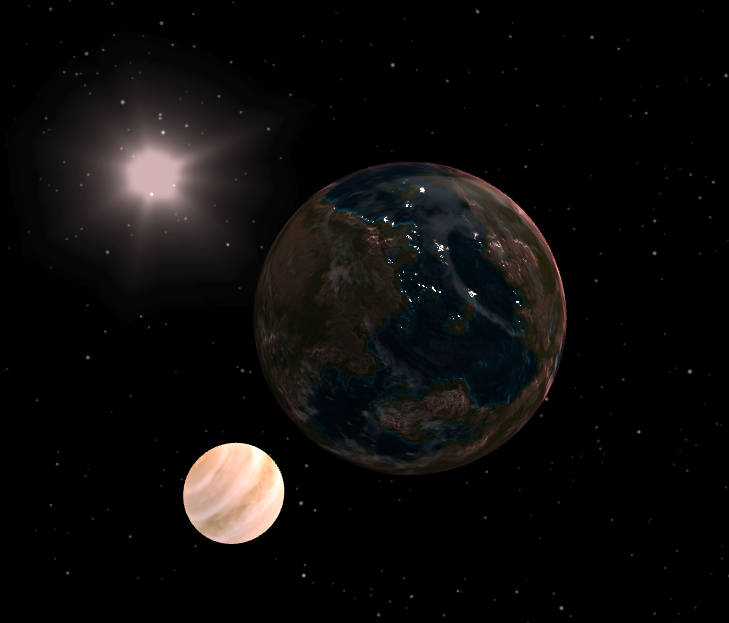L O S T
Hey so, for all you planet creators out there, I found a fun little Google-Toy which will let you create a planet  It might take a few attempts to adjust to the settings etc but it's really worth it. Anyway here you go:
It might take a few attempts to adjust to the settings etc but it's really worth it. Anyway here you go:
http://planetmaker.wthr.us/
[member='Raziel'] contributed to these resources also, adding the following;
Orbital period calculator: http://www.calctool.org/CALC/phys/astronomy/planet_orbit (I'd suggest setting radius to au, which would be 1 for earth)
Main sequence diagram showing typical luminosities and colours of main sequence stars:
http://commons.m.wikimedia.org/wiki/File:HRDiagram.png
Mass-luminosity relationship for stars: http://en.m.wikipedia.org/wiki/Mass–luminosity_relation
Habitable zone calculator: http://astro.unl.edu/naap/habitablezones/animations/stellarHabitableZone.html
Multiple system habitable zone calculator: http://astro.twam.info/hz/
Put the above together, with the fact that brightness reduces on a distance squared basis and you'll be well on the way to placing your planet on a sensible orbit!
Here is his example:
So let's have a simple example.
I want a planet with 1.5 earth mass and a bright blue star.
I go the the main-sequence diagram and I select a star with 100 stellar luminosity and an effective temperature of 10,000K.
Now I want to place my planet in orbit. I go the habital zone calculator, where you can place your star on the main sequence and through its life find the habitable zone in AU (this is fun!). I can't find a simulation with the right mass, but by going either side I can see that the approximate mass of my star is 3 solar masses, my planet is around 10AU away from the star.
Now I go the the orbital period calculator. I enter the following numbers:
10 AU
3 Suns
1.5 Earths
I find that my orbital period is 18 years!
And his stance on the situation:
Obviously I'm not going to check if every planet makes perfect sense. I love to see creative and interesting submissions (we don't really have a great deal of empirical knowledge about habitable planets outside our solar system after all!)
However, if you're making a fairly standard planet (without environmental manipulation) I will check that your numbers aren't so far off your planet should be burnt to a crisp or a frozen rock.
http://planetmaker.wthr.us/
[member='Raziel'] contributed to these resources also, adding the following;
Orbital period calculator: http://www.calctool.org/CALC/phys/astronomy/planet_orbit (I'd suggest setting radius to au, which would be 1 for earth)
Main sequence diagram showing typical luminosities and colours of main sequence stars:
http://commons.m.wikimedia.org/wiki/File:HRDiagram.png
Mass-luminosity relationship for stars: http://en.m.wikipedia.org/wiki/Mass–luminosity_relation
Habitable zone calculator: http://astro.unl.edu/naap/habitablezones/animations/stellarHabitableZone.html
Multiple system habitable zone calculator: http://astro.twam.info/hz/
Put the above together, with the fact that brightness reduces on a distance squared basis and you'll be well on the way to placing your planet on a sensible orbit!
Here is his example:
So let's have a simple example.
I want a planet with 1.5 earth mass and a bright blue star.
I go the the main-sequence diagram and I select a star with 100 stellar luminosity and an effective temperature of 10,000K.
Now I want to place my planet in orbit. I go the habital zone calculator, where you can place your star on the main sequence and through its life find the habitable zone in AU (this is fun!). I can't find a simulation with the right mass, but by going either side I can see that the approximate mass of my star is 3 solar masses, my planet is around 10AU away from the star.
Now I go the the orbital period calculator. I enter the following numbers:
10 AU
3 Suns
1.5 Earths
I find that my orbital period is 18 years!
And his stance on the situation:
Obviously I'm not going to check if every planet makes perfect sense. I love to see creative and interesting submissions (we don't really have a great deal of empirical knowledge about habitable planets outside our solar system after all!)
However, if you're making a fairly standard planet (without environmental manipulation) I will check that your numbers aren't so far off your planet should be burnt to a crisp or a frozen rock.





















